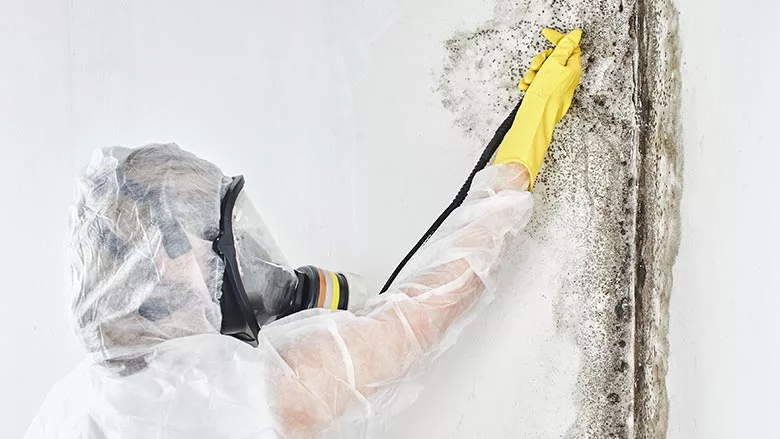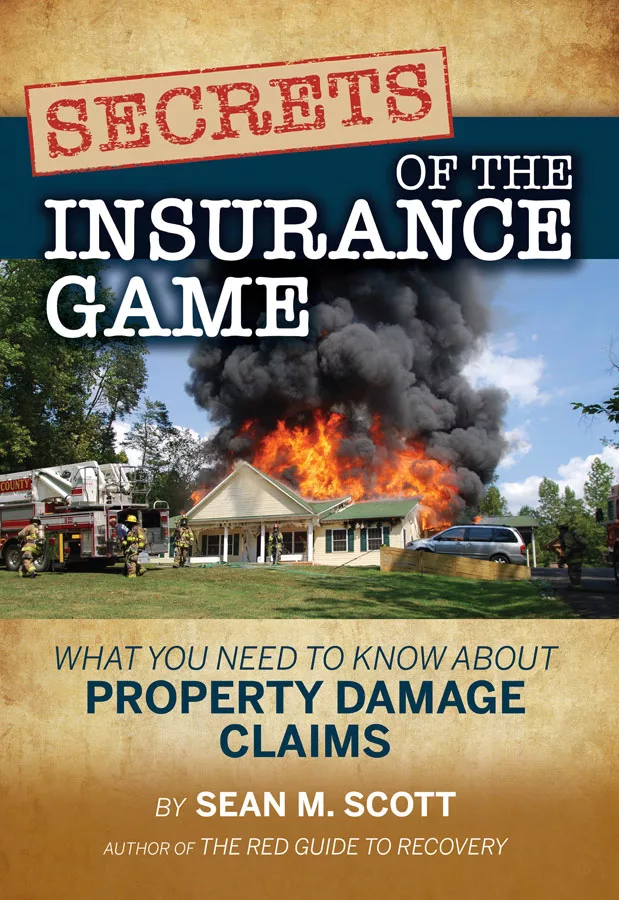Who Let the Dogs...In? Up Close with Animal Hoarding
It was a hot August morning. The sun had just begun to rise by the time we arrived at the small, one-way street in Philadelphia. We were here to decontaminate and clean out the property of a recently exposed animal hoarder.

It was a hot August morning. The sun had just begun to rise by the time our Bio-Clean of New Jersey crew arrived at the small, one-way street in Philadelphia. We were here to decontaminate and clean out the property of a recently exposed animal hoarder. The building was composed of just 6 rooms and a basement; a thin-but-tall traditional Philly row home, the same as the 50 other homes lining the block.
Only, for the past 15 years, this one had been home to 83 Chihuahuas. And as you might expect, through no fault of their own, they had not been the cleanest of houseguests.
 It took two weeks to traverse the maze of bureaucracy, including the police department; fire department; utilities department; streets department; construction department and SEPTA transit authority, who needed to approve the permit for the dumpster and partial closing of the street, before we could do a thing. Now, with a 40-yard Dumpster along the side of a moderately trafficked one-way street, the job, already daunting task, was ready to go. The techs were ready and everything was in place. Now we just have to clean up.
Any good hoarding specialist knows that hoarding is considered by many psychological researchers to be closely linked to Obsessive Compulsive Disorder (OCD). Animal hoarding, though, is slightly different.
It took two weeks to traverse the maze of bureaucracy, including the police department; fire department; utilities department; streets department; construction department and SEPTA transit authority, who needed to approve the permit for the dumpster and partial closing of the street, before we could do a thing. Now, with a 40-yard Dumpster along the side of a moderately trafficked one-way street, the job, already daunting task, was ready to go. The techs were ready and everything was in place. Now we just have to clean up.
Any good hoarding specialist knows that hoarding is considered by many psychological researchers to be closely linked to Obsessive Compulsive Disorder (OCD). Animal hoarding, though, is slightly different.
Studies preformed by the Hoarding of Animals Research Consortium have shown that animal hoarding is more closely related to early childhood experiences (neglectful, abusive, inconsistent parenting) and/or genetic, fetal, psychosocial and environmental factors. These things can all lead to negative self image, depression, and a difficulty with all types of relationships later in life. When people feel this way, they sometimes remedy the situation with a pet.
 Pets offer unconditional love. This is the reason many prisons have begun using pet therapy to help rehabilitate certain psychologically wounded convicts. For some, a pet is all a person needs to start feeling better. For others, it can be a gateway into animal hoarding.
Pets offer unconditional love. This is the reason many prisons have begun using pet therapy to help rehabilitate certain psychologically wounded convicts. For some, a pet is all a person needs to start feeling better. For others, it can be a gateway into animal hoarding.
A “triggering event” like a crisis or trauma can shatter any self confidence and/or mental stability that the love of a pet may have given. This can lead to the addition of more pets as filler for an emotional void. It can also lead to the neglect of current pets. Two can quickly turn into seven, and seven into 42. What’s worse is that this incident can lead to an increase in animal and self neglect.
While this is not the only way an animal hoarding case can come to be, it is fairly common. Any animal hoarding case is a heartbreaking one, and can create seriously dangerous living conditions for the animals, the owner, and anyone who comes into contact with the property.
 Back to Philadelphia, where dangerous living conditions were the theme of the day. This was a row home, so even at its cleanest, it’s still a tall, narrow home. The first day was dedicated to cleaning up the first floor. Several inches of fecal matter covered the entire first floor. The kitchen had piles as high as the counters.
Back to Philadelphia, where dangerous living conditions were the theme of the day. This was a row home, so even at its cleanest, it’s still a tall, narrow home. The first day was dedicated to cleaning up the first floor. Several inches of fecal matter covered the entire first floor. The kitchen had piles as high as the counters.
Our team donned respirators and PPE. Respirators were an absolute necessity on this job. The feces had been laying there for years, and over time it had formed a hard, dry, outer crust. Our crews had to use pick axes and shovels to dislodge the dried feces. Any disturbances of this crust let off plumes of dust so, when the techs began shoveling, breathing without a respirator would be very dangerous. Air scrubbers were used to contain the large amounts of fecal dust that were floating in the air. Protecting workers and the surrounding neighbors were of the utmost concern.
Outside temperatures quickly rose to 90 degrees, and there was no air conditioning or ventilation present inside the house. It was extremely important to remember proper hydration and rest periods to shore up the safety of the technicians. Constant PPE changes were necessary.
 Animal feces contains pathogens, just like human waste. Roundworm, Campylobacter, Lptospira, Cryptosporiduim, E.Coli, Fecal Coliforms and Roundworm are all found in animal feces. The air was also rich with ammonia, a byproduct from the large urine deposits and the decomposition of animal waste. What’s more, the whole house was crawling with disease-carrying insects. It was biological health concerns like these that make it necessary to take action when someone is hoarding animals, even if the person doing the hoarding thinks they are doing the community a service.
Animal feces contains pathogens, just like human waste. Roundworm, Campylobacter, Lptospira, Cryptosporiduim, E.Coli, Fecal Coliforms and Roundworm are all found in animal feces. The air was also rich with ammonia, a byproduct from the large urine deposits and the decomposition of animal waste. What’s more, the whole house was crawling with disease-carrying insects. It was biological health concerns like these that make it necessary to take action when someone is hoarding animals, even if the person doing the hoarding thinks they are doing the community a service.
Many cases of animal hoarding involve people who believe they are ruining some sort of vigilante pet shelter. Some people begin their hoarding this way, and others just use it to defend an ongoing negative process. From talking to neighbors, it seems clear that this case in Philadelphia was someone who thought they were helping.
While it may seem noble to try and help take in homeless animals, more often than not this is something that exists only in the mind of the people hoarding these animals. Animals go from roaming the streets to being locked into the confines of a small home. There, they can breed and inbreed, creating even tighter living conditions. These cramped conditions lead to animals spreading diseases among themselves. The massive buildup of animal waste only increases the amount of disease being spread.
It took two days just to finish the first floor. We had no choice but to work from the bottom up. We needed a clear pathway to move contaminated debris from the top floors to the dumpster outside. The hard, crumbly fecal matter on the floors and stairs made for a serious tripping hazard. The steep stairways and halls cramped with debris didn’t help either.
 This property was a major fire hazard. If a fire was to start in a home like this one, escaping with one’s life would be very difficult. Tight corridors, flammable feces, and unstable walkways mean certain death in a fire. If this property had caught fire while the 83 dogs were living in it, the probability of the resident or a firefighter losing their life would be dangerously high.
This property was a major fire hazard. If a fire was to start in a home like this one, escaping with one’s life would be very difficult. Tight corridors, flammable feces, and unstable walkways mean certain death in a fire. If this property had caught fire while the 83 dogs were living in it, the probability of the resident or a firefighter losing their life would be dangerously high.
It took our team six days of digging, three 40-yard Dumpsters, and hundreds of special heavy-duty hazardous waste bags, but we finally cleared the house out. This is without a doubt the largest amount of animal waste we’ve ever pulled out from an animal hoarding case. We left the house free of bulk contaminates and ready to be inspected by city officials.
But what does fate hold for the house now? It’s unsure. The city has no specific laws for animal hoarding, and in cases like this, psychiatric treatment may be more beneficial than jail time for the former owner. The one certain ray of sunshine from all for this, though, is that all 83 Chihuahuas were rescued and put up for an adoption by the ASPCA.

It was a hot August morning. The sun had just begun to rise by the time our Bio-Clean of New Jersey crew arrived at the small, one-way street in Philadelphia. We were here to decontaminate and clean out the property of a recently exposed animal hoarder. The building was composed of just 6 rooms and a basement; a thin-but-tall traditional Philly row home, the same as the 50 other homes lining the block.
Only, for the past 15 years, this one had been home to 83 Chihuahuas. And as you might expect, through no fault of their own, they had not been the cleanest of houseguests.

Studies preformed by the Hoarding of Animals Research Consortium have shown that animal hoarding is more closely related to early childhood experiences (neglectful, abusive, inconsistent parenting) and/or genetic, fetal, psychosocial and environmental factors. These things can all lead to negative self image, depression, and a difficulty with all types of relationships later in life. When people feel this way, they sometimes remedy the situation with a pet.

A “triggering event” like a crisis or trauma can shatter any self confidence and/or mental stability that the love of a pet may have given. This can lead to the addition of more pets as filler for an emotional void. It can also lead to the neglect of current pets. Two can quickly turn into seven, and seven into 42. What’s worse is that this incident can lead to an increase in animal and self neglect.
While this is not the only way an animal hoarding case can come to be, it is fairly common. Any animal hoarding case is a heartbreaking one, and can create seriously dangerous living conditions for the animals, the owner, and anyone who comes into contact with the property.

Our team donned respirators and PPE. Respirators were an absolute necessity on this job. The feces had been laying there for years, and over time it had formed a hard, dry, outer crust. Our crews had to use pick axes and shovels to dislodge the dried feces. Any disturbances of this crust let off plumes of dust so, when the techs began shoveling, breathing without a respirator would be very dangerous. Air scrubbers were used to contain the large amounts of fecal dust that were floating in the air. Protecting workers and the surrounding neighbors were of the utmost concern.
Outside temperatures quickly rose to 90 degrees, and there was no air conditioning or ventilation present inside the house. It was extremely important to remember proper hydration and rest periods to shore up the safety of the technicians. Constant PPE changes were necessary.

Many cases of animal hoarding involve people who believe they are ruining some sort of vigilante pet shelter. Some people begin their hoarding this way, and others just use it to defend an ongoing negative process. From talking to neighbors, it seems clear that this case in Philadelphia was someone who thought they were helping.
While it may seem noble to try and help take in homeless animals, more often than not this is something that exists only in the mind of the people hoarding these animals. Animals go from roaming the streets to being locked into the confines of a small home. There, they can breed and inbreed, creating even tighter living conditions. These cramped conditions lead to animals spreading diseases among themselves. The massive buildup of animal waste only increases the amount of disease being spread.
It took two days just to finish the first floor. We had no choice but to work from the bottom up. We needed a clear pathway to move contaminated debris from the top floors to the dumpster outside. The hard, crumbly fecal matter on the floors and stairs made for a serious tripping hazard. The steep stairways and halls cramped with debris didn’t help either.

It took our team six days of digging, three 40-yard Dumpsters, and hundreds of special heavy-duty hazardous waste bags, but we finally cleared the house out. This is without a doubt the largest amount of animal waste we’ve ever pulled out from an animal hoarding case. We left the house free of bulk contaminates and ready to be inspected by city officials.
But what does fate hold for the house now? It’s unsure. The city has no specific laws for animal hoarding, and in cases like this, psychiatric treatment may be more beneficial than jail time for the former owner. The one certain ray of sunshine from all for this, though, is that all 83 Chihuahuas were rescued and put up for an adoption by the ASPCA.
Looking for a reprint of this article?
From high-res PDFs to custom plaques, order your copy today!




